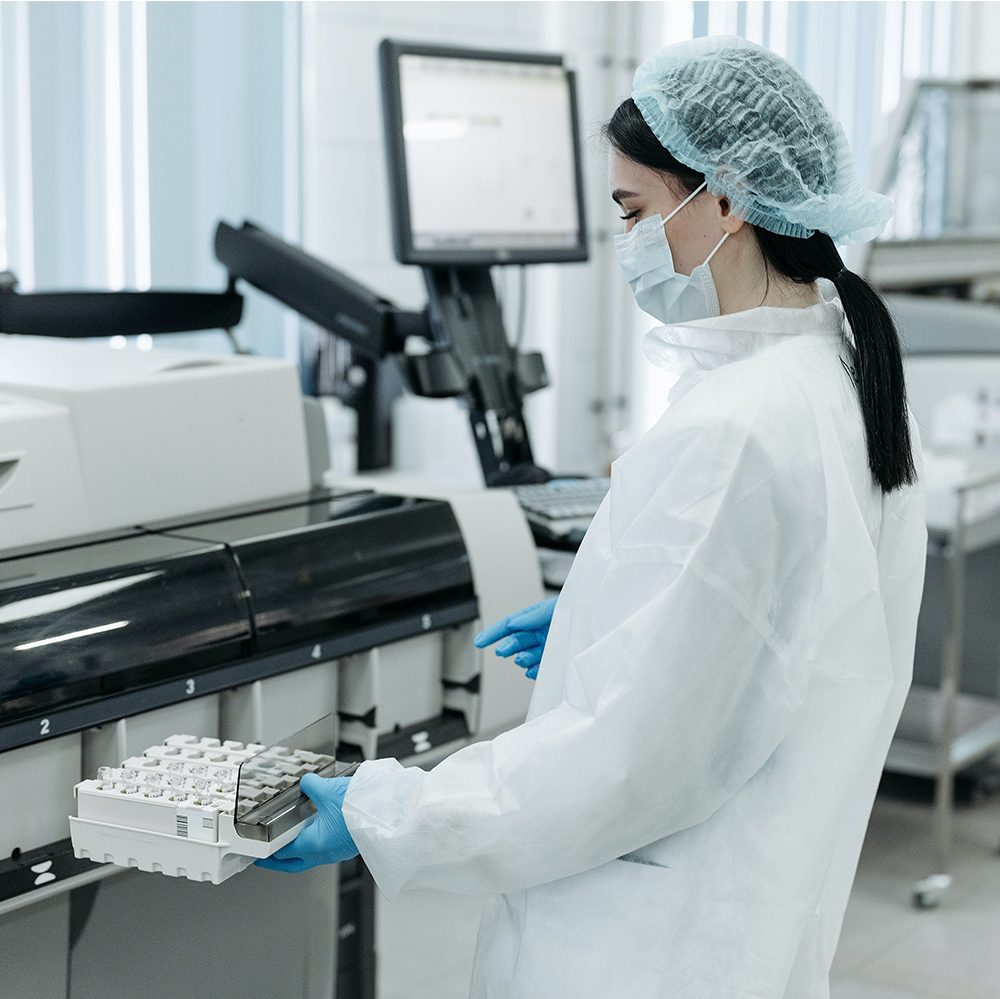Sample collection, storage and transport specifications
Specimen collection
Respiratory tract specimens:
including nasal swabs, throat swabs, nasopharyngeal extracts, nasal wash, and throat gargle. The optimal collection time is the first 3 days after onset of illness and no more than 7 days.
The collection of bronchoalveolar lavage fluid is determined and collected by the doctor in charge in accordance with relevant management regulations and diagnosis and treatment guidelines.
(1) Nasal swab: The collector holds the patient’s mandible with his left hand, holds the sterile swab in his right hand and gently inserts it into the nasal cavity of the nasal passage, stays for a moment and then slowly turns and withdraws. Wipe the other nostril with another swab. Dip the swab head into the sampling solution, squeeze the swab head several times in the sampling solution, break off the swab tail, and discard the swab tail.
(2) Throat swab: Use the tongue depressor with your left hand to press the patient’s tongue. Hold a sterile swab in your right hand to wipe the bilateral pharyngeal tonsils and posterior pharyngeal wall. Dip the swab head into the sampling liquid. Squeeze the swab head several times in the sampling liquid. Break the tail of the swab with force. discard. Nasal and throat swabs can also be collected in the same sampling tube.
(3) Mouthwash: Gargle your throat with 10mL of normal saline. When gargling, ask the patient to tilt his head back slightly and make a sound of “oh” to allow the saline to rotate in the pharynx. Then, collect the wash solution in a dish or beaker.
(4) Nasal wash: Have the patient sit in a sitting position with his head slightly tilted back. Use a pipette to inject 5 mL of normal saline into one nostril. Instruct the patient to pronounce the K sound at the same time to close the pharyngeal cavity. Then ask the patient to lower his head to allow the saline to flow out, and collect the lotion in a dish or beaker. Repeat this process to wash both nostrils.
(5) Nasopharyngeal aspirate: commonly used to collect tracheal and bronchial secretions. Connect the vacuum pump to the urinary catheter. Insert the catheter into the nasal cavity parallel to the palate, turn on the vacuum device, make a slow swirling motion, and collect the other nostril as well. Rinse the urinary catheter with 3 mL of sampling solution.



No responses yet